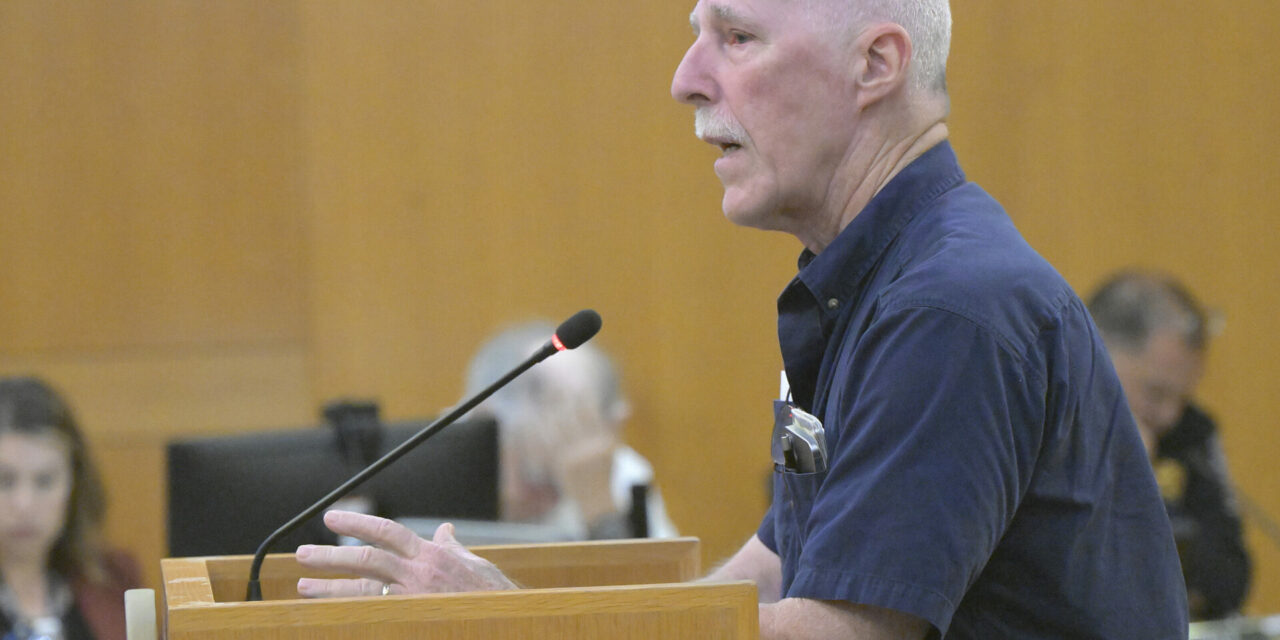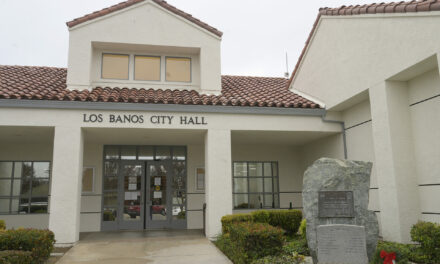By John Fulton
Contributing Writer
According to the California Vehicle Code (CVC) section 21200 a bicycle is a vehicle. A bicycle is therefore entitled to travel on the roadways.
In fact, the first paved roads were built to accommodate the 100,000 members of a cyclist organization. Those first paved roads, designed and built for bicycles in the 1880’s, two decades before there were cars on the roads.
The CVC says that a cyclist going with the speed of traffic has a right to take the full lane. If a bicyclist is travelling at a slower speed than other vehicles, the CVC says to stay to the right to facilitate being passed.
The CVC says a bicyclist going slower than the other traffic is to stay as far right as “practicable” except when it is unsafe to do so… (It then goes on to enumerate exceptions.) …and when approaching an intersection or driveway where vehicles may be taking a right turn, and when the bicyclist is taking a left turn.
What this means, in my opinion, is that a cyclist in the city limits of Los Banos is legally entitled to take the full lane. I will admit that it is often unsafe to do so. I will also contend that the City of Los Banos has made it unsafe to do otherwise.
The City has painted white lines that they label “Bike Lanes” that do not meet the requirements for safety — the requirements for width; the requirements of a three-foot wide buffer between the cyclists and the motor vehicle passing the cyclist; the requirements for posting with signs; the termination of the bike lane prior to any intersections or driveways where a vehicle may overtake a cyclist and turn right.
A further explanation of what one can interpret as a safe width for a bike lane is helpful here. How is the lane width to be measured? From edge to edge? Edge of what?
The line that is painted should not be included because the coefficient of friction on paint is much less than on unpainted asphalt. When wet the paint is even more slippery, so the right edge of the white paint line is the left edge of the bike lane.
The gutter is designed to be a place for the water to drain off of the traveled-way. Gutters are therefore where storm drains are located. Storm drains are necessary in the gutter alongside the roadway edge. To the right of the gutter is a curb.
Slots in the drain covers are death traps for cyclists so the California Manual on Uniform Traffic Control Devices (MUTCD) says to measure from the left edge of the gutter, rather than measuring from the curb at the right side of the gutter.
The typical width of a bike lane in Los Banos is 32 inches by my measurement or three feet if you include the slippery white line. The standard recommendation is for five feet, plus a three-foot buffer. That is for a bike lane that is actually located on an appropriate street and has room for a bike lane on both sides of the street.
How many streets in Los Banos are so wide that they can have 16 feet of that width set aside for cyclist travel? And at the same time, they will need a sign 100 feet prior to each driveway or intersection saying that the bike lane has ended and that the cyclist is now supposed to be taking the full lane?
For an example of unsafe and inappropriate locations, Lorena Falasco Elementary School has intermittent bike lane markings westbound on Overland Avenue that are inconsistent. In some places it is 32 inches wide and to the left of the shoulder.
That is already bad enough, but it gets worse, much worse. The bike lane is not on both sides of the street in all locations. Then, westbound at Cottonwood it disappears to the right of the 20-inch-wide shoulder after directing cyclists into a ditch.
If the bike lane is not continuous, it is creating a more dangerous situation. It is safer to post a sign that says “Share the Lane.” The MUTCD, Caltrans, and CVC say this signage is absolutely necessary at this specific location and at every intersection where right turns are allowed across a bike lane.
That signage is necessary throughout Los Banos at every bike lane intersection. That required but absent signage is also sufficient by itself without any painted lines. The bike lanes as presently marked are unsafe, not necessary, not sufficient and increase the liability of the city.
The City of Los Banos will be liable for the additional wrongful deaths that are sure to happen as a result of the current way that Los Banos is marking but not correctly signing our bike lanes. All the current lane marking practice is doing is costing money while making cycling less safe.
In addition to the unsafe bike lane situation there is another unsafe condition for cyclists in Los Banos: storm drains.
Storm drains in many locations present a slotted trap for unwary cyclists who are squeezed to the gutter while attempting to use the current too-narrow “bike lanes” as they are currently painted along the right edge of the road.
In wet weather the paint gets slick, and it is unsafe for bicycle travel on the left part of the bike lane. Even worse are the death traps, to the right side of the bike lane. There you find storm drains with slots parallel to the direction of travel.
The bike wheel can drop down into the slot, thus stopping the bike but not the rider. The rider catapults forward, rotating around the handlebar, and lands on his or her helmet causing severe injuries; without a helmet death is likely.
Some drain covers have been retrofitted to reduce the slot length to 4” or so. But on some the retrofitting has not been maintained or was not accomplished adequately; the resulting slot length on some drains is over 10” which will allow the bike wheel to drop down a significant distance, sufficient to render the drain a death trap.
The MUTCD says bike lanes should be six feet in width if posted speeds of motor vehicles are 40 mph. If under 40 mph the lane width recommended is five feet with a minimum of four feet. Los Banos has typically marked lanes of under three feet, from the gutter to the white paint lane marking.
The placement of signage that says “Share the Road” is necessary and sufficient. The painting of the term “Bike Lane” is not necessary, it is not sufficient, the labor and the paint are not cheap, and the improper messaging to motorists is creating a huge liability for the city from cyclists’ families filing wrongful death suits, and is directing cyclists into unsafe locations and is currently not being done in accordance with state and federal guidance.
Respectfully
John Fulton
(John Fulton, a Los Banos resident, has been a bike rider for years. He restarted the Fresno Cycling club in 1971 and has taught bike safety classes, as well as automotive defensive driving in Los Angeles.
In 1972 he pedaled around California, riding well over 10,000 miles by bike, mostly in Fresno County, covering over 400 miles per week from March through October. The other months he was pedaling “only” 100 miles per week in his daily commute.}


